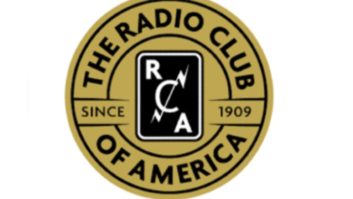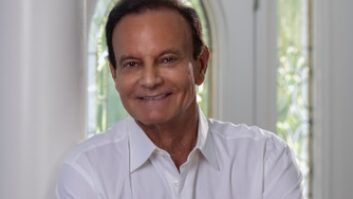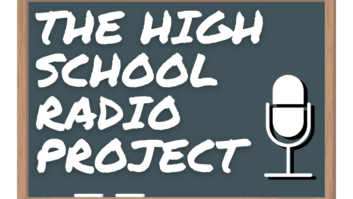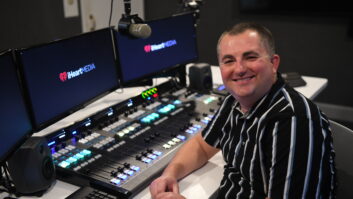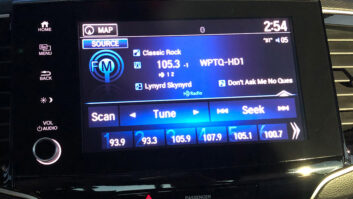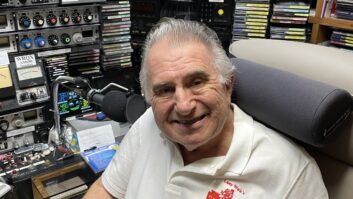The author is the director general of the European Broadcasting Union.
GENEVA — Since the advent of television in the 1950s, people have been predicting the death of radio. Yet, despite the naysayers, it has continued to develop, innovate and thrive.
Of course there are challenges for all media sectors in an on-demand world – and radio has not escaped them. Younger audiences are used to choice and YouTube and Spotify have changed the music listening landscape.
But those that have written radio off over the decades have been proven wrong. Radio has shown a clear resilience.
Radio still reaches nearly 90 percent of European citizens every week. In Europe we listen to, on average, nearly 2.5 hours of radio every day and, in my home country Ireland, that figure is an incredible 3.5 hours a day.
I was recently a member of the European Commission’s High Level Expert Group looking at ways to tackle “Fake News” or “Disinformation.” I found it interesting just how many people accepted a narrative that trust in “all” media had collapsed in the digital age. Traditional media companies and news outlets were being lumped together with platforms.
[Read: EBU Says Radio Is Most Trusted Medium in Europe]
Yet, as the broadcasters present pointed out, this is just not the case. Nowhere is that clearer than in Radio. The EBU’s new Trust in Media report, published last month, shows that radio is the most trusted form of media – trusted by nearly 60 percent of the European population. At times of crisis, radio is still where people turn for their primary source of information and news.
At the EBU, our job is to support public service radio, help drive change in the industry and find new ways of enhancing the user experience to better engage audiences.
The good news is that there is a clear appetite for radio on new platforms. Greater connectivity, voice-controlled devices and widening multiplatform consumption allow broadcasters to connect with audiences in fresh and exciting ways.
However this also creates new problems for us as third party platforms and devices disrupt the direct connection broadcasters used to enjoy with their audiences. What happens, as has been the case in Belgium recently, when a third party decides to remove you from their platform? Or, as happened last year in Italy, places inappropriate advertising next to your content? As a broadcaster, who will own the relationship with your audience in the future? These are questions we need to wrestle with collectively.
The new generation of radio listeners are also increasingly expecting a more visual experience to run alongside their daily radio shows. Evidence suggests that listeners like to see the faces of their favorite DJs or musicians, enjoy music videos and live reports and learn more about what they are listening to.
Here at the EBU, we are working on initiatives to help Members with visualization such as EBU Storyboard which brings radio to social, converting audio clips into video content that is easily shareable online.
Our Members are also developing new ways of engaging with audiences. For example, BBC Radio 4’s Quake — a short-form audio drama — was accompanied by graphic-novel style animations and an immersive 360° 3D film and Czech Radio’s 1968 used surround sound and archive material (both visual and audio) to tell the story of the events that took place in Paris and Prague in that year. Both were recipients of the first Euroradio Innovation Fund.
[Read about what went on at the EBU’s 2018 Digital Radio Summit]
The EBU is working on ways to ensure that radio remains prominent in cars and in homes. By working with automotive manufacturers and providing Hybrid Radio services and expertise to our Members, this ensures that radio in the car looks as good as it sounds. For voice-controlled devices, we bring Members together to share research and innovation and develop a common strategy.
By constantly innovating, we will ensure that radio continues to appeal to new generations. Despite being one of the oldest mediums, radio still reaches over 80 percent of young Europeans every week. However, in the era of streaming and downloads, we cannot afford to be complacent. If radio stands still it will face extinction. We all need to understand the scale of the threat.
At the EBU, we are strengthening our offer for young audiences in the Euroradio Music Exchange, which is the world’s largest offer of live music, sharing around 3,000 concerts from Members every year. And we are bringing Youth Channel Directors together to share ideas and best practice.
Despite all the changes in the media world, it is inspiring to see how resilient radio has been. Rather than dying out it is, in many countries, evolving, morphing and changing to adapt to the world around it. And we want to be here to support and champion it every step of the way.
This article was first published on the EBU website.


